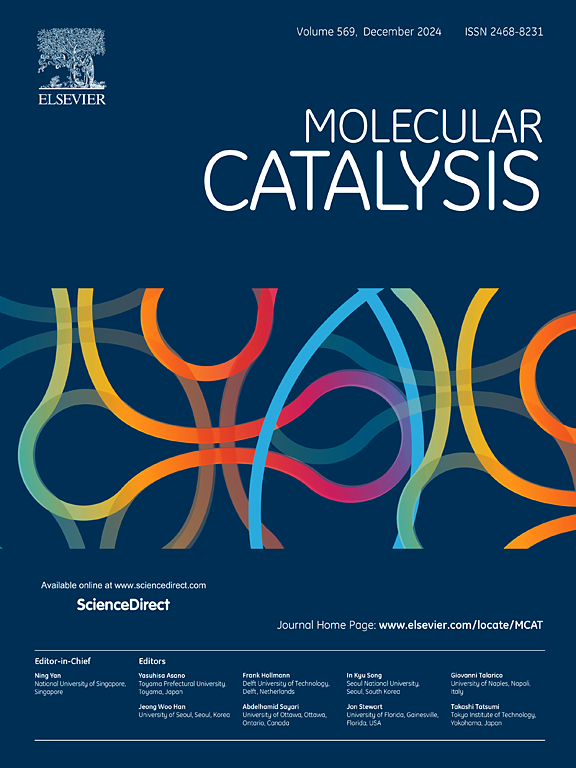Characterization of the active species in the aerobic oxidation of benzyl alcohol catalyzed by Ru/ZrO2
IF 3.9
2区 化学
Q2 CHEMISTRY, PHYSICAL
引用次数: 0
Abstract
Ru nanoparticles and Ru acetylacetonate were loaded onto various solid supports, including Al2O3, SiO2, TiO2, ZrO2, and CeO2, and tested in the catalytic oxidation of benzyl alcohol with molecular oxygen in air. Two distinct preparation methods, involving different heat treatment protocols, were employed to activate the catalysts. Among the various supports, Ru loaded onto ZrO2 and CeO2 exhibited particularly high activity in the formation of benzaldehyde. The catalyst Ru/ZrO2 exhibited unique redox behavior that had not been previously observed. The catalytic activity and dispersion of Ru/ZrO2 changed substantially depending on the Ru loading and thermal treatment temperature. In particular, high catalytic activity was obtained when the Ru loading was <0.4 wt%. Although the catalytic activity of Ru/ZrO2 catalyst was significantly reduced when reused as it was, it could be reused without loss of activity when the recovered catalyst was thermally treated in air at 973 K prior to each reuse. The catalysts were characterized using hydrogen temperature-programmed reduction (H2-TPR). For Ru/ZrO2 treated below 973 K, the H2/Ru ratio observed in the H2-TPR exceeded two, suggesting the ZrO2 was partially reduced with H2 during H2-TPR.

求助全文
约1分钟内获得全文
求助全文
来源期刊

Molecular Catalysis
Chemical Engineering-Process Chemistry and Technology
CiteScore
6.90
自引率
10.90%
发文量
700
审稿时长
40 days
期刊介绍:
Molecular Catalysis publishes full papers that are original, rigorous, and scholarly contributions examining the molecular and atomic aspects of catalytic activation and reaction mechanisms. The fields covered are:
Heterogeneous catalysis including immobilized molecular catalysts
Homogeneous catalysis including organocatalysis, organometallic catalysis and biocatalysis
Photo- and electrochemistry
Theoretical aspects of catalysis analyzed by computational methods
 求助内容:
求助内容: 应助结果提醒方式:
应助结果提醒方式:


